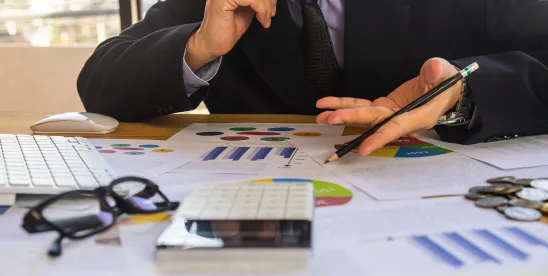Silicon Valley is built on the promise of innovation, but for the better part of the past three years, the innovation economy has been in a coma. It all started with runaway inflation triggering the biggest hike in the price of money in a century. The era of “zero interest rate policy” and “quantitative easing” is over. The cost of capital suddenly got expensive, lending became hard to come by, and valuations took a hit. Then came geopolitical uncertainty, with hot and cold wars erupting between nuclear weaponized states and actors. The IPO markets were shut down and regulators closed the market from technology mergers and acquisitions (M&A). Fiscal and tax policies were in question, and unpredictable regulatory enforcement ensued. Then came “Liberation Day,” and the end of nearly a century of free-trade policies, leaving markets as uncertain as the cost of manufacturing.
The impact to the innovation economy has been a dramatic decrease in the raising of new venture capital (VC) funds and their deployment, as VC investors have been unable to distribute proceeds to investors, leaving slim pickings for startups looking for funding.
But it wasn’t all bad news, as the release of ChatGPT by OpenAI has driven the fastest consumer adoption of new technology in the history of mankind, and the speed of automation is radically disrupting the cost of everything, unleashing a paradigm shift in how we live, work, and play.
While the first set of factors worked to shut down the innovation markets, the advent of generative artificial intelligence (Gen AI) and the promise of artificial general intelligence (AGI) has redirected capital flows to businesses building the infrastructure of the new frontier.
As we look forward to the second half of 2025, with clarity restored to U.S. fiscal and tax policy, a downward rate cut bias at the Federal Reserve, some relaxing of regulatory enforcement, and the potential resetting of terms of trade, there is reason for optimism for the innovation economy no matter your politics.
A Strong Tax Bill Sets the Stage
On July 4, we saw the passage of the sweeping tax package (the Big Beautiful Bill) that notably preserves and strengthens the Qualified Small Business Stock (QSBS) exemption. This rewards early risk-taking by allowing founders, employees, and investors to exclude up to 100% of gains from federal taxes on qualifying stock sales. The tax shelter was increased from $10 million to $15 million, and the terms for qualifying were shortened from five years to three years.
For Silicon Valley and the broader venture environment, this is a direct incentive to build and hold for long-term outcomes. This effort, combined with targeted tax cuts aimed at boosting consumer demand and business investment, is encouraging for startups and founders.
But We’re Not There Yet
While fiscal policy is moving in the right direction, a few key pressure valves still need to release, including the interest rate cuts everyone is waiting for. The cost of capital remains stubbornly high, particularly for capital-intensive startups (think robotics, data centers, and energy required to power Gen AI and AGI) or those looking to raise growth-stage rounds. A shift from the Federal Reserve would ripple through valuations, funding rounds, and exit paths.
We also need some trade deals to come through. The global startup ecosystem is built on cross-border collaboration. There has been some recent progress toward stabilizing some of our trade relationships, but the threat of higher tariffs for many of our partners still exists. Therefore, more must be done to reduce friction and restore investor confidence.
There is also a lingering fog of uncertainty. While markets don’t need perfection, they do need predictability. Uncertainty, whether in the form of monetary policy, tariffs, or enforcement priorities, is the killer of risk-taking. Stability helps to drive innovation.
A More Transparent DOJ and FTC
Regulatory uncertainty has loomed large, particularly when it comes to M&A in technology. For too long, companies and investors alike have faced restrictive, opaque, and unpredictable merger review processes from the DOJ and FTC. While the enforcers under the current administration are not necessarily softening their stance, they are becoming more transparent in their demands. This helps to provide the predictability needed for strategic buyers and sellers to engage in serious conversations again. Meanwhile, large technology buyers are returning to the market with new “acqui-hire” and licensing structures to change the paradigm of “buy vs. build” to “spend to build.”
When there is more regulatory clarity, such as rational antitrust reviews, coupled with the promise of lower interest rates, the M&A market will be in a better position to bounce back. Strategic buyers who’ve been sitting on dry powder are already signaling interest, and startups that delayed exits in 2023–24 are ready to come back to the table.
The knock-on effects from an M&A rebound could be powerful. For example, we could see the IPO window start to open. A clear pipeline of high-quality exits builds confidence and momentum. Capital could also start returning to LPs. Exits mean liquidity, and liquidity means limited partners get their money back…finally.
VCs would also be able to raise and deploy capital again. With returns flowing back and a clearer exit environment, venture funds can confidently put money to work. That, in turn, allows them to raise new funds and start the cycle again.
Back to the Good Life
For those of us who have weathered the past few volatile years alongside our clients, this turning point feels hard-won. Startups are scrappy, and founders are resilient, but the health of the innovation economy depends on more than grit. It requires a fully functioning system that rewards risk and supports bold ideas.
If good fiscal policy, smartly negotiated trade deals, and a transparent regulatory environment collide, we could be in for a more stable foundation that allows the innovation markets to open. The message to founders, investors, and entrepreneurs is simple. It’s time to get to work, and it’s time to build, as the path to the good life opens again.




 />i
/>i
